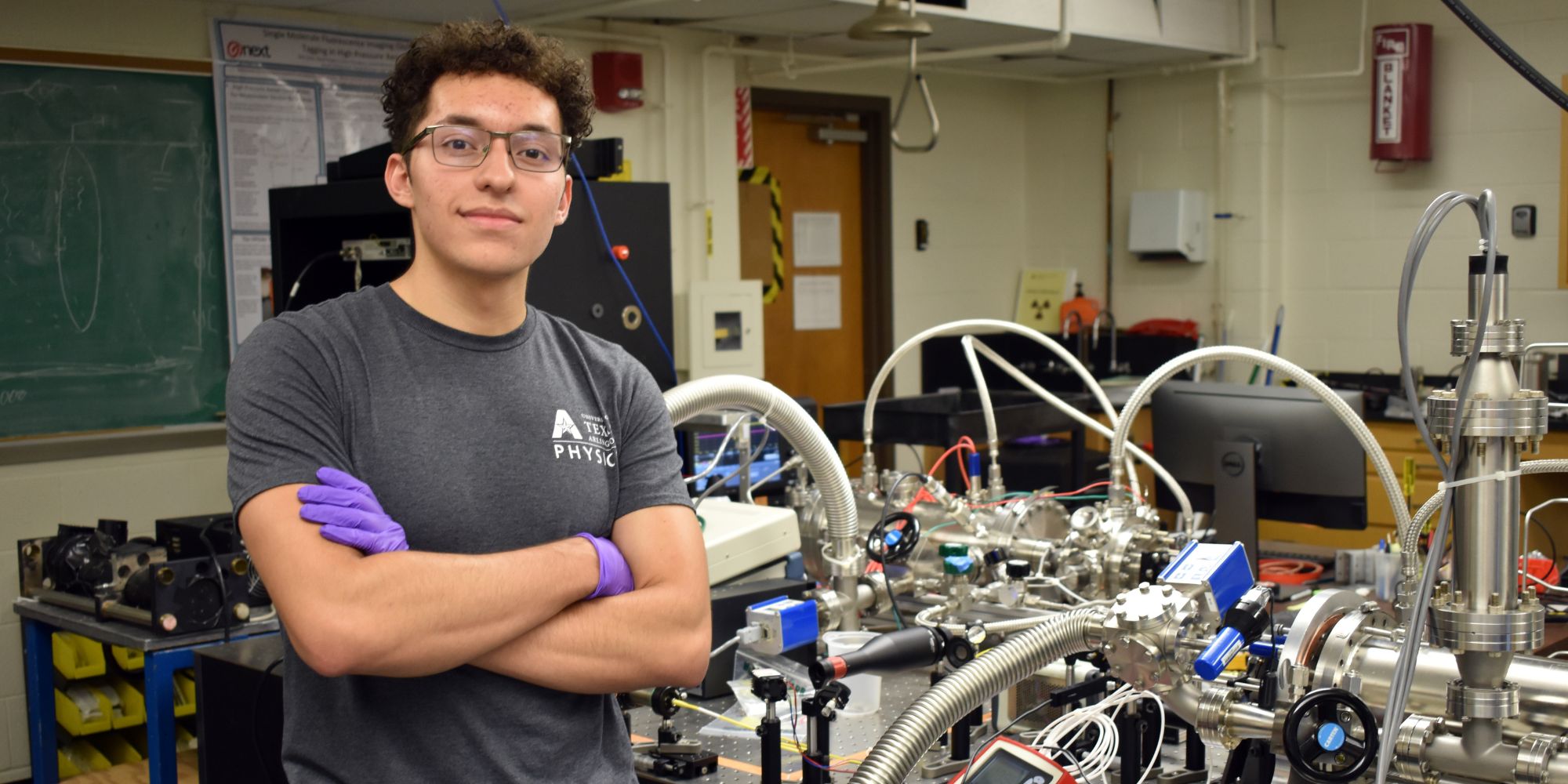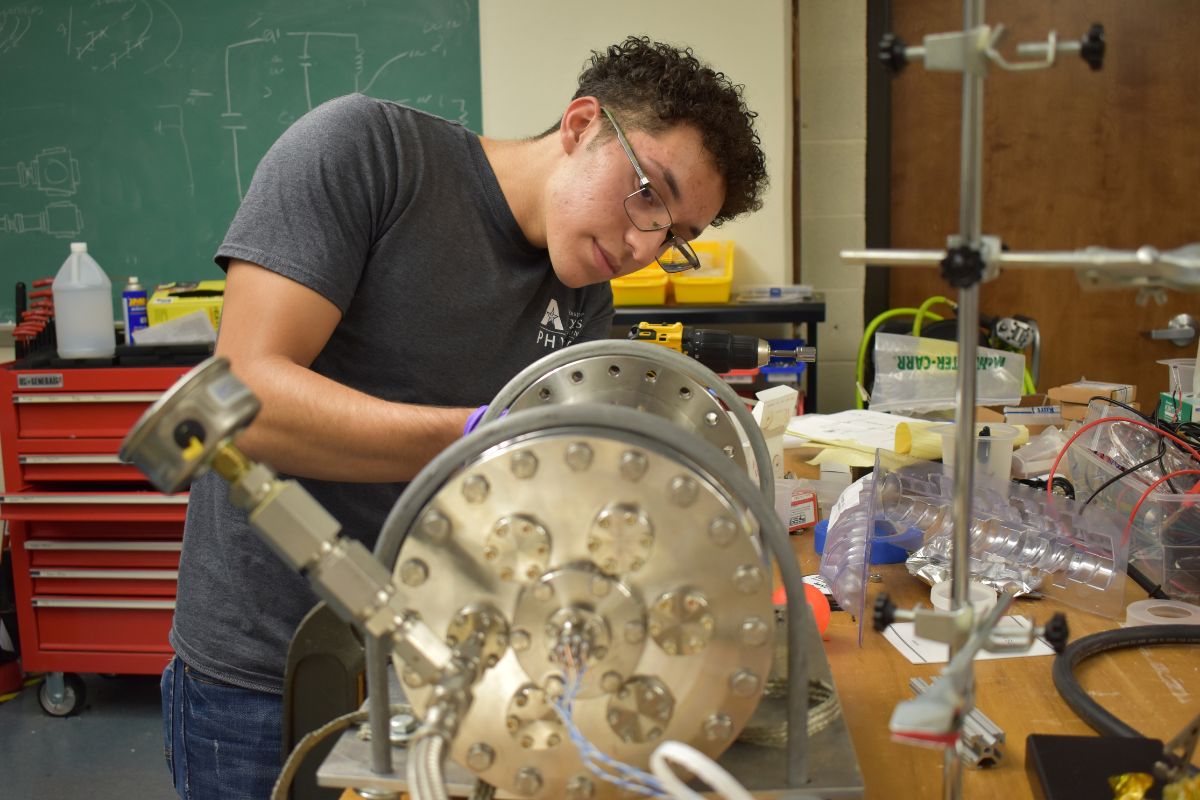
Why does the universe exist?
In a basement laboratory crowded by lasers, metal gas tanks and small-scale particle detectors, a group of scientists at The University of Texas at Arlington is looking for answers.
To help solve the universal puzzle, Javier Samaniego, a senior physics major at The University of Texas at El Paso, traveled more than 600 miles to join UTA's Neutrino and Rare Event Searches (NuRES) research group for a 10-week internship in particle and nuclear physics.
"Neutrinos are complex particles. Very little is known about them, and they are difficult to detect," Samaniego said. "As it turns out, they could be key to understanding the very first moments of our universe."
Samaniego's internship was part of the Nuclear Research Experiences for Minority Students in Texas (NREMST) program initiated by Ben Jones, associate professor of physics, and fellow NuRES faculty member Jonathan Asaadi, associate professor of physics. The program, funded by a grant from the U.S. Department of Energy, is centered on recruiting undergraduates with an interest in physics who are members of underrepresented minority groups in science and technology to assist with nuclear research projects at UTA.
The NuRES group is composed of faculty and student researchers who study the properties of neutrinos to understand their role within and beyond the standard model of physics. To observe neutrino properties, the group is developing a new time projection chamber that could incorporate barium tagging systems. If the researchers can successfully identify the barium nucleus that emerges during neutrinoless double beta decay, it will help them detect this nearly undetectable particle.

As an intern, Samaniego helped NuRES overcome obstacles on the path to successful barium tagging and detection. To prove barium can be detected in their experiments, the team needed to build a controllable beam of barium ions in the laboratory. Samaniego helped determine the optimal electron emitting material for the ion source by developing and operating a purpose-built vacuum test system. Using his engineering skills, he designed and built the support frames for the barium beam that will become part of the ion detection system. To measure the temperature inside the beam's crucible during operation, he and a fellow student tested the accuracy of an infrared thermometer and a thermocouple, comparing each set of results.
"Since the beginning of his time in our lab, Javier has made very important contributions and even solved some major problems that I wasn't sure were solvable," Jones said. "He has been an invaluable member of the team."
Samaniego said conducting hands-on experiments in the lab has amplified lessons he learned in the classroom.
"Listening to a lecture is important, but it should definitely be followed by hands-on work like this," he said. "Students need lab experiences to help us connect concepts to real problems."
NuRES' current projects include the Neutrino Experiment with a Xenon TPC search for neutrinoless double beta decay hosted in Spain, the IceCube South Pole Neutrino Observatory and the development of new technologies for particle detection in noble gases and liquids, among others.
For Samaniego, Jones and many others, the laws of physics have the potential to unlock the secrets of our existence.
"To me, physics is the main science," Samaniego said. "Our daily lives and everything from the big bang to how planes operate is related to physics. There is still so much more for physicists to discover about our world."






